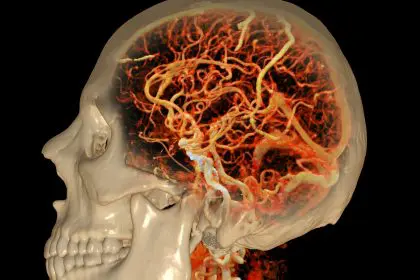Abdominal pain ranks among the most common reasons people seek medical care, accounting for approximately 5-10% of all emergency department visits. Yet this familiar sensation ranges from completely benign to immediately life-threatening—with the difference sometimes hinging on subtle distinctions most people miss.
The abdominal cavity houses numerous vital organs beyond just the digestive system, including portions of the urinary tract, reproductive organs, and major blood vessels. This concentration of critical structures explains why pain in this region can signal serious conditions affecting multiple body systems. The challenge lies in distinguishing between ordinary discomfort and genuine medical emergencies.
While minor abdominal pain frequently resolves without intervention, certain pain patterns indicate potentially dangerous conditions requiring immediate medical attention. Understanding these distinct warning signs could mean the difference between timely treatment and life-threatening delays.
The most dangerous abdominal conditions share a critical characteristic: they typically worsen rapidly without proper medical intervention. What begins as manageable discomfort can escalate to organ damage, systemic infection, or catastrophic internal bleeding within hours. This progression timeline makes recognizing serious symptoms particularly crucial.
Several factors complicate self-assessment of abdominal pain severity. Pain perception varies dramatically between individuals, with some people experiencing minimal discomfort even with serious conditions while others perceive intense pain from benign causes. Additionally, certain demographics—including elderly individuals, pregnant women, and those with diabetes or compromised immune systems—may develop serious complications with minimal initial symptoms.
The following warning signs help identify abdominal pain requiring emergency evaluation regardless of individual pain tolerance or risk factors. When these red flags appear, the wisest course involves professional medical assessment rather than continued self-monitoring.
Warning sign 1: Sudden, severe pain that incapacitates
Abdominal pain that develops suddenly and intensely enough to stop you mid-activity demands immediate attention, particularly when it reaches maximum severity within minutes rather than gradually building over hours or days. This pattern, often described as “thunderclap” pain, suggests potentially catastrophic conditions including ruptured organs, blood vessel emergencies, or severe inflammation of vital structures.
Several life-threatening conditions produce this distinctive pain pattern. Abdominal aortic aneurysm rupture—a tear in the body’s main blood vessel—creates immediate, tearing pain typically radiating to the back, accompanied by dizziness and rapid pulse as internal bleeding accelerates. This condition carries mortality rates exceeding 80% without emergency surgical intervention, with survival chances diminishing by approximately 10% for each hour of delay.
Perforated viscus—a hole developing in the stomach, intestine, or other hollow organ—similarly creates sudden, severe pain as digestive contents spill into the sterile abdominal cavity, triggering immediate and intense inflammatory responses. Without prompt surgical repair and antibiotic treatment, this condition rapidly progresses to systemic infection, septic shock, and potential multi-organ failure.
Pain intensity alone provides an imperfect indicator, as individual pain tolerance varies significantly. The more reliable warning comes from the pain’s functional impact—does it force you to stop all activity, make you unable to find a comfortable position, or prevent normal breathing? When pain essentially incapacitates you, professional evaluation becomes necessary regardless of potential causes.
This severe pain pattern particularly warrants emergency care when accompanied by other concerning symptoms including lightheadedness, confusion, rapid heart rate, or difficulty breathing. These additional symptoms suggest systemic effects beyond localized abdominal problems—often indicating blood loss, spreading infection, or cardiovascular compromise requiring immediate intervention.
Warning sign 2: Migration of pain to the right lower quadrant
Pain that begins around the navel or central abdomen and gradually shifts to the right lower quadrant represents the classic progression of appendicitis—inflammation of the appendix that requires prompt surgical intervention. This specific migration pattern holds particular significance because it reflects the underlying pathophysiology as irritation progresses from initial inflammation to peritoneal involvement.
The appendix, a small pouch connected to the first part of the large intestine, becomes dangerous when obstructed and inflamed. As the organ swells, initial pain registers through visceral nerve fibers that provide somewhat vague, generalized discomfort typically centered near the umbilicus. As inflammation progresses to affect the peritoneum (the membrane lining the abdominal cavity), pain becomes more precisely localized to the right lower quadrant where the appendix resides.
This distinctive migration pattern occurs in approximately 50-60% of appendicitis cases, with variations more common in pregnant women, elderly individuals, and children. When this classic pattern appears, particularly with accompanying fever, nausea, or loss of appetite, immediate medical evaluation becomes essential as appendiceal rupture risks increase significantly after 24-36 hours of symptom onset.
The standard diagnostic test for suspected appendicitis, known as “McBurney’s point tenderness,” involves gentle pressure applied to the right lower quadrant approximately one-third of the way between the hip bone and umbilicus. Sharp pain with this maneuver, especially when accompanied by increased pain upon sudden release of pressure (rebound tenderness), strongly suggests appendiceal inflammation requiring surgical consultation.
While appendicitis represents the most common condition creating this migration pattern, other serious abdominal issues occasionally mimic this progression. Certain ovarian conditions, intestinal infections, and early Crohn’s disease flares sometimes create similar symptoms, further emphasizing the importance of professional evaluation rather than continued self-monitoring when this distinctive pain pattern develops.
Warning sign 3: Severe pain accompanied by fever
The combination of significant abdominal pain with fever (typically defined as temperature above 100.4°F or 38°C) signals active infection or inflammation requiring prompt medical attention. This symptom pairing suggests the body is mounting systemic responses to a serious abdominal condition rather than merely experiencing functional discomfort.
Several potentially dangerous conditions typically present with this combination. Acute cholecystitis (gallbladder inflammation) frequently produces persistent right upper quadrant pain accompanied by fever as the inflamed gallbladder triggers both local and systemic inflammatory responses. Without appropriate intervention, this condition risks progression to gallbladder rupture, abscess formation, or spreading infection.
Diverticulitis—inflammation of small pouches that form in the digestive tract—similarly presents with abdominal pain (typically left-sided) accompanied by fever. This condition requires antibiotic therapy and sometimes surgical intervention as complications may include abscess formation, bowel perforation, or fistula development connecting the intestine to other structures.
Pyelonephritis, or kidney infection, often creates both flank/back pain and fever, frequently accompanied by urinary symptoms. This serious infection requires prompt antibiotic treatment to prevent kidney damage, bloodstream infection, or septic shock in severe cases.
The significance of fever accompanying abdominal pain increases with fever height and duration. Temperatures exceeding 102°F (38.9°C) suggest more serious infections, as do fevers persisting beyond 48 hours or recurring after temporary resolution. These patterns indicate infections potentially resistant to the body’s natural defense mechanisms, requiring medical intervention.
The combination becomes particularly concerning when accompanied by signs of progressive infection such as shaking chills, confusion, extreme fatigue, or rapid heart/breathing rates. These additional symptoms suggest developing systemic inflammatory response syndrome (SIRS) or early sepsis—conditions requiring immediate medical intervention to prevent life-threatening complications.
Warning sign 4: Abdominal pain with persistent vomiting
Vomiting commonly accompanies many abdominal conditions, but persistent vomiting paired with significant pain suggests potentially serious issues affecting digestive tract integrity or function. This combination frequently indicates conditions preventing normal gastrointestinal passage—either through physical blockage or severe inflammation disrupting normal motility.
Intestinal obstruction—blockage preventing normal food and fluid passage through the digestive tract—classically presents with progressive abdominal pain accompanied by persistent vomiting. As obstruction continues, the character of vomit often changes, potentially becoming feculent (containing fecal material) in complete small bowel obstructions. This serious condition requires prompt evaluation as prolonged obstruction risks intestinal tissue death, perforation, or severe electrolyte disturbances.
Vomiting that continues despite an empty stomach particularly warrants attention, as this pattern suggests either severe inflammation or mechanical issues rather than simple gastric irritation. Similarly concerning is vomiting that fails to provide even temporary pain relief, suggesting conditions beyond simple gastroenteritis or food poisoning.
The color and content of vomit provide important diagnostic clues regarding underlying conditions. Clear or white vomit suggests stomach acid or mucus without concerning additions. Yellow or green tinges indicate bile, suggesting vomiting originating beyond the stomach. Coffee-ground appearance suggests partially digested blood from upper gastrointestinal bleeding, while frank red blood indicates active, significant bleeding requiring immediate evaluation.
Forceful vomiting accompanied by severe pain sometimes creates additional complications through increased intra-abdominal pressure. These complications include Mallory-Weiss tears (lacerations at the stomach-esophagus junction) or rarely, esophageal rupture (Boerhaave syndrome)—both serious conditions requiring specialized management.
The risks associated with persistent vomiting extend beyond the underlying cause to include significant dehydration and electrolyte disturbances. The body rapidly loses critical fluids, sodium, potassium, and acid-base balance through continued vomiting, potentially creating additional medical emergencies requiring intervention beyond addressing the primary abdominal condition.
Warning sign 5: Pain associated with signs of internal bleeding
Abdominal pain accompanied by indicators of internal bleeding represents a true medical emergency requiring immediate evaluation and often surgical intervention. These bleeding signs might be obvious, like vomiting blood or passing black, tarry stools, or more subtle, such as progressive lightheadedness, increasing heart rate, or unusual fatigue.
Several serious conditions can create this dangerous combination. Bleeding ulcers, particularly those affecting the stomach or duodenum, typically create persistent upper abdominal pain accompanied by either hematemesis (vomiting blood) or melena (black, tarry stools indicating digested blood). These ulcers sometimes erode into significant blood vessels, creating rapid, life-threatening hemorrhage requiring emergency endoscopic intervention.
Ruptured ectopic pregnancy—a fertilized egg implanting outside the uterus, usually in a fallopian tube—creates progressive lower abdominal pain accompanied by internal bleeding as the growing embryo ruptures its implantation site. This condition primarily affects women of reproductive age and requires immediate surgical management to control hemorrhage and prevent fatal outcomes.
Traumatic intra-abdominal injuries, even from seemingly minor accidents, sometimes create delayed bleeding presenting as progressive abdominal pain with developing signs of blood loss. These injuries involve organs with rich blood supply like the liver or spleen, which may initially contain bleeding before eventually decompensating, producing rapid deterioration.
The body compensates remarkably well during early blood loss, often maintaining near-normal blood pressure until 30-40% of blood volume has been lost. This compensation mechanism creates a dangerous situation where vital signs may appear reassuring despite significant ongoing hemorrhage. More reliable early indicators include increased heart rate, particularly when changing from lying to sitting or standing position, decreased urine output, and subjective lightheadedness or confusion.
Skin color changes provide additional clues regarding internal bleeding severity. Progressive pallor (particularly noticeable in the mucous membranes like the gums or under the eyelids) suggests significant blood loss. In darker-skinned individuals, examining the palms, soles, or inside the mouth provides more reliable assessment areas for developing pallor indicating blood loss.
Warning sign 6: Pain with significant abdominal rigidity or distention
The physical characteristics of the abdomen during pain episodes provide crucial information about potential serious conditions. Abdominal rigidity—involuntary hardening of the abdominal wall muscles—occurs reflexively when inflammation affects the peritoneum (the membrane lining the abdominal cavity). This protective mechanism attempts to splint the inflamed area but signals potentially serious underlying conditions.
True rigidity differs from voluntary muscle tightening through its persistence despite relaxation attempts. Even during deep breathing or distraction, the affected area remains board-like rather than softening as consciously tensed muscles would. This involuntary guarding specifically suggests peritoneal irritation from conditions including perforated organs, chemical irritation from leaked digestive fluids, or advanced infections affecting the abdominal cavity.
The distribution of rigidity provides diagnostic clues about underlying conditions. Diffuse rigidity throughout the entire abdomen suggests widespread peritoneal inflammation, as might occur with perforated ulcers or ruptured appendix with dispersed contents. Localized rigidity indicates more contained inflammation, as typically seen in early appendicitis, diverticulitis, or localized abscesses.
Progressive abdominal distention—visible swelling that increases over hours—similarly suggests serious underlying conditions, particularly when accompanied by significant pain. This combination occurs in several concerning situations including developing bowel obstructions, severe inflammatory conditions causing ileus (intestinal paralysis), or accumulating blood or other fluids within the abdominal cavity.
The pattern of developing distention provides important information. Symmetric, progressive enlargement throughout the abdomen typically suggests trapped gas or fluid affecting the entire abdominal cavity. Asymmetric distention, where certain areas appear more prominently swollen than others, suggests localized processes like partial bowel obstructions or inflammatory masses.
Percussion—gently tapping the abdomen with fingertips—helps distinguish between different causes of distention. Tympanic sounds (drum-like resonance) suggest trapped gas, while dull sounds indicate fluid accumulation. Areas with dramatically different percussion sounds adjacent to each other particularly warrant professional evaluation as they suggest abnormal collections or masses rather than normal digestive contents.
Warning sign 7: Pain accompanied by unusual mental status changes
Abdominal conditions severe enough to affect brain function represent particularly dangerous situations requiring immediate medical intervention. Mental status changes—including confusion, unusual drowsiness, agitation, or difficulty concentrating—suggest either toxins reaching the bloodstream from abdominal sources or physiological derangements severe enough to impair normal brain function.
Several serious abdominal conditions create this dangerous combination. Advanced liver disease with developing hepatic encephalopathy produces progressive confusion as the failing liver cannot properly filter toxins from the bloodstream. This condition often begins subtly with mild concentration difficulties or personality changes before progressing to more obvious confusion or even coma without intervention.
Severe pancreatitis similarly affects mental status through multiple mechanisms including systemic inflammatory responses, metabolic derangements, and in some cases, alcohol withdrawal in susceptible individuals. The combination of significant abdominal pain with developing confusion in pancreatitis indicates severe disease with substantially higher mortality risk requiring intensive care management.
Diabetic ketoacidosis—a life-threatening complication of diabetes—often presents with abdominal pain that patients or providers might misattribute to simpler conditions. The developing acidosis progressively affects mental status, creating increasing drowsiness, confusion, or agitation. This serious condition requires emergency glucose and fluid management to prevent potentially fatal outcomes.
Even seemingly minor mental status changes warrant serious attention when accompanying significant abdominal pain. Subtle signs like unusual word-finding difficulties, unexpected emotional lability, or atypical responses to routine questions may provide the earliest indicators of developing systemic effects from serious abdominal conditions.
Age significantly affects how mental status changes manifest. Younger individuals typically maintain normal mental function until very late in serious illness progression, making any noticeable changes particularly concerning. Elderly patients demonstrate an opposite pattern, often showing confusion or behavioral changes as the first and sometimes only sign of serious abdominal conditions before other classic symptoms develop.
Beyond the warning signs: Other factors increasing concern
While the seven warning signs above identify clearly dangerous situations, several additional factors influence risk assessment for abdominal pain. These considerations help determine the urgency of medical evaluation even when classic warning signs appear less prominently.
Age-related risk factors
Age significantly impacts both the likely causes and potential dangers of abdominal pain. Individuals over 60 experience higher rates of serious causes for their abdominal pain, with studies showing approximately 35-40% of elderly emergency department patients with abdominal complaints have conditions requiring surgical intervention compared to 15-20% of younger patients.
This increased risk stems from several factors. Older individuals often have reduced pain perception, sometimes experiencing minimal discomfort even with conditions causing significant tissue damage. Additionally, age-related changes in immune response create less obvious inflammatory signs, sometimes masking serious infections until advanced stages develop.
At the opposite age extreme, infants and young children warrant special concern due to limited communication abilities and rapidly developing physiology. Young children often cannot precisely locate or describe their pain, making parental observation of behavioral changes crucially important. Warning behaviors include unusual irritability, drawing knees to chest, refusing to walk, or crying that intensifies with movement.
Significant medical history elements
Certain medical histories substantially increase concern for serious causes of abdominal pain. Previous abdominal surgeries create risk for adhesions (internal scar tissue) that may lead to bowel obstructions years or even decades after the original procedure. Additionally, surgical alterations to normal anatomy create possibilities for unique complications requiring specialized evaluation.
Immunocompromised states—whether from medications like steroids or chemotherapy, conditions like HIV, or transplant status—warrant lower thresholds for emergency evaluation. These conditions both increase infection susceptibility and reduce typical inflammatory responses that would otherwise create obvious warning symptoms.
Recent weight loss without intentional dieting raises concern for underlying conditions potentially related to new abdominal pain. This combination suggests possible malignancies, chronic inflammatory conditions, or malabsorption disorders that reduce nutritional intake or utilization while creating pain symptoms.
Cardiovascular disease history increases risk for mesenteric ischemia—reduced blood flow to intestinal tissues that creates severe abdominal pain seemingly disproportionate to physical examination findings. This dangerous condition typically affects those with established vascular disease and requires prompt intervention to prevent intestinal tissue death.
Pregnancy-related considerations
Pregnancy dramatically changes both the likely causes and potential dangers of abdominal pain. Certain serious conditions including ectopic pregnancy and placental abruption create abdominal or pelvic pain requiring immediate specialized care to prevent maternal and fetal harm.
Normal anatomical changes during pregnancy shift the position of abdominal organs, altering typical pain patterns for common conditions. Appendicitis, for example, typically creates higher and more lateral pain during pregnancy as the growing uterus pushes the appendix upward and outward from its usual position.
Pregnancy also creates unique pain considerations including round ligament pain, which despite causing significant discomfort represents a benign condition requiring reassurance rather than intervention. Distinguishing between normal pregnancy discomforts and concerning symptoms often requires specialized obstetric evaluation.
Medication influences
Certain medications significantly affect how abdominal conditions present and progress. Corticosteroids and other immunosuppressive drugs reduce inflammatory responses, potentially masking serious infection signs until advanced stages develop. These medications warrant lower thresholds for medical evaluation even with seemingly minor symptoms.
Pain medications, particularly opioids, sometimes obscure developing symptoms of serious conditions by reducing pain perception without addressing underlying causes. This symptom masking creates risk for delayed diagnosis of progressive conditions that might otherwise create more obvious warning signs prompting earlier evaluation.
Anticoagulant medications (blood thinners) significantly increase bleeding risk from even minor abdominal conditions. What might cause minimal bleeding in others can create dangerous hemorrhage in anticoagulated patients, warranting more urgent evaluation of abdominal pain in this population.
When to seek emergency care versus waiting
Understanding which situations warrant immediate emergency evaluation versus those appropriate for scheduled medical appointments helps balance proper caution with practical healthcare utilization. The following guidelines provide reasonable decision frameworks for various abdominal pain scenarios:
Situations requiring immediate emergency evaluation
Certain scenarios warrant no delay in seeking emergency care, ideally through ambulance transport rather than private vehicle:
- Severe pain that comes on suddenly, particularly when accompanied by sweating, pale appearance, or feeling faint
- Any abdominal pain in pregnant women that is severe or accompanied by vaginal bleeding
- Pain associated with inability to pass gas or stool for more than 12 hours, especially with progressive abdominal swelling
- Abdominal pain following significant trauma, even without obvious external injuries
- Vomiting blood or passing maroon or black stools with abdominal pain
- Pain accompanied by fever exceeding 102°F (38.9°C), especially with shaking chills
- Any of the seven warning signs discussed previously, particularly when multiple signs appear simultaneously
These situations suggest potentially life-threatening conditions where each hour of delayed treatment may significantly impact outcomes. The emergency department provides immediate access to surgical consultation, advanced imaging, and critical care resources unavailable in outpatient settings.
Situations appropriate for urgent care or prompt outpatient evaluation
Some abdominal pain scenarios warrant medical attention within 24 hours but may not require immediate emergency department resources:
- Moderate pain persisting beyond 6 hours without improvement despite over-the-counter remedies
- Pain accompanied by low-grade fever (below 101°F or 38.3°C) without other concerning symptoms
- Burning urination with lower abdominal discomfort, suggesting possible urinary tract infection
- Mild to moderate pain that interrupts sleep but allows normal activities during waking hours
- Recurrent pain episodes that follow similar patterns to previously diagnosed conditions
- Discomfort associated with menstrual cycles that exceeds usual patterns but without severe symptoms
These situations benefit from medical evaluation but typically allow time for assessment in less acute settings. Urgent care centers, primary care providers offering same-day appointments, or telehealth consultations often provide appropriate initial management for these scenarios.
Scenarios reasonable for home monitoring with scheduled follow-up
Certain abdominal discomfort patterns typically resolve without specific medical intervention and may reasonably be monitored at home with scheduled medical follow-up if they persist:
- Mild pain occurring after dietary indiscretions that improves with bowel movements or passing gas
- Brief pain episodes lasting less than 2 hours that completely resolve without recurrence
- Generalized discomfort that permits normal activities and responds to simple interventions like heat application or over-the-counter medications
- Symptoms consistent with viral gastroenteritis (stomach flu) including mild pain with diarrhea and/or vomiting lasting less than 48 hours in otherwise healthy individuals
- Known chronic conditions with familiar symptom patterns that previously resolved without specific intervention
These situations warrant medical attention if they persist beyond expected timeframes, intensify beyond mild to moderate levels, or develop additional concerning features during the monitoring period.
Preparing for medical evaluation of abdominal pain
When seeking medical care for abdominal pain, certain preparation steps significantly improve diagnostic accuracy and treatment efficiency. The following approaches help ensure the most productive medical evaluation:
Information to gather before evaluation
Document pain characteristics using specific descriptors rather than general terms. Note exact location using anatomical landmarks (e.g., “three inches below the navel” rather than simply “lower abdomen”), and describe quality with precise terms like sharp, dull, burning, cramping, or pressure.
Track chronological development including when pain began, whether it started suddenly or gradually, how it has changed over time, and any factors that seem to worsen or improve symptoms. This timeline information helps distinguish between various conditions with similar pain locations but different progression patterns.
Note associated symptoms beyond pain itself, including seemingly unrelated issues like recent rashes, joint discomfort, unusual fatigue, or respiratory symptoms. These additional features sometimes provide crucial diagnostic clues about systemic conditions manifesting with abdominal components.
Create a complete medication list including prescription drugs, over-the-counter medications, supplements, and any recent medication changes. Certain drugs directly cause or contribute to abdominal symptoms, while others may mask important diagnostic findings during evaluation.
What to expect during medical assessment
Initial vital sign measurement provides critical information about potential serious conditions. Elevated heart rate frequently accompanies significant pain but may also indicate infection, blood loss, or dehydration. Abnormal blood pressure, particularly low readings or significant changes when changing position, suggests potential shock states requiring immediate intervention.
Abdominal examination includes several components beyond simply touching the painful area. Providers typically begin with visual inspection, looking for distention, visible pulsations, or skin changes before proceeding to careful listening with a stethoscope to assess bowel sounds. Percussion (tapping) and palpation (feeling with varying pressure) complete the basic examination sequence.
Laboratory tests commonly ordered for abdominal pain evaluation include complete blood count (assessing for infection or blood loss), basic metabolic panel (evaluating kidney function and electrolyte status), liver function tests, lipase (for pancreatitis assessment), and urinalysis. Women of childbearing age typically undergo pregnancy testing regardless of reported sexual activity.
Imaging studies depend on specific clinical situations but frequently include abdominal x-rays, ultrasound, or CT scanning based on suspected conditions. Understanding that certain diagnoses require specific imaging modalities helps patients anticipate evaluation pathways—ultrasound typically assesses gallbladder and pelvic organs best, while CT scanning provides superior evaluation for many intestinal and inflammatory conditions.
Questions to ask medical providers
Several specific questions help clarify both the diagnostic process and treatment expectations:
“What conditions are you considering based on my symptoms?” This question helps understand the diagnostic possibilities being evaluated rather than focusing prematurely on a single diagnosis.
“What findings would indicate a need for hospital admission versus safe home management?” Understanding the criteria for different treatment settings helps prepare for potential outcomes while clarifying which developing symptoms might warrant return evaluation if sent home.
“What specific symptoms should prompt immediate return if they develop after leaving?” This critical information ensures appropriate monitoring for concerning developments requiring reassessment.
“How long should I expect these symptoms to last with the treatment plan?” Setting realistic recovery expectations helps distinguish between normal healing timeframes and concerning delayed improvement that might indicate treatment failure.
Preventing delayed diagnosis of serious conditions
Some abdominal conditions create diagnostic challenges that increase risks for delayed treatment. Understanding these pitfalls helps patients advocate effectively when concerned about potential serious conditions:
Atypical presentations requiring special attention
Elderly patients frequently develop “silent” or atypical presentations of serious conditions. Appendicitis in older adults often presents without classical migration patterns or fever, sometimes manifesting primarily through confusion or general decline. This atypical presentation contributes to higher perforation rates in this age group.
Diabetic patients with neuropathy sometimes experience minimal pain despite serious abdominal conditions due to altered nerve function. This reduced pain perception creates risks for delayed diagnosis unless providers maintain high suspicion for abdominal pathology when these patients report even mild discomfort.
Women sometimes experience diagnostic delays for certain conditions due to overlapping symptoms with gynecological issues. Appendicitis, for example, is misdiagnosed more frequently in women of reproductive age, often mistaken initially for ovarian conditions with similar pain patterns.
Communication strategies to ensure proper evaluation
Using clear, factual descriptions rather than minimizing symptoms helps ensure appropriate evaluation. Cultural factors sometimes lead certain populations to downplay pain intensity, potentially causing providers to underestimate condition severity. Objective descriptors like “unable to walk upright” or “cannot find a comfortable position” provide more reliable indicators than subjective pain scales.
Reporting all symptoms, even those seemingly unrelated to the abdomen, provides critical diagnostic information. Shoulder pain, for example, sometimes indicates diaphragm irritation from abdominal conditions rather than primary shoulder problems. Similarly, unusual fatigue or subtle mental status changes may provide important clues about systemic effects from abdominal sources.
Clearly communicating changes in symptoms during evaluation helps prevent premature diagnostic closure. Pain that shifts location, intensifies despite treatment, or develops new associated symptoms warrants prompt reporting rather than waiting for providers to recheck later.
When to seek second opinions
Persistent symptoms despite normal initial evaluations warrant reconsideration, particularly if pain continues for more than 24-48 hours without improvement. Some serious conditions develop progressively, with initial assessments falling within normal parameters before more obvious abnormalities emerge.
Intuitive concern despite reassurance sometimes indicates subtle symptoms not fully captured in standard evaluations. Patients who sense something seriously wrong despite normal preliminary results should advocate for continued observation or additional assessment rather than simply accepting reassurance when symptoms persist.
Diagnostic uncertainty expressed by initial providers should prompt consideration of additional opinions, particularly for complex presentations. Many serious abdominal conditions present atypically in their early stages, with diagnostic clarity emerging only through continued observation or specialized evaluation.
Understanding these warning signs helps distinguish between ordinary abdominal discomfort and potentially dangerous conditions requiring prompt medical attention. By recognizing these critical differences, you can make informed decisions about when to seek emergency care versus when home monitoring remains appropriate, potentially preventing serious complications through timely intervention.















